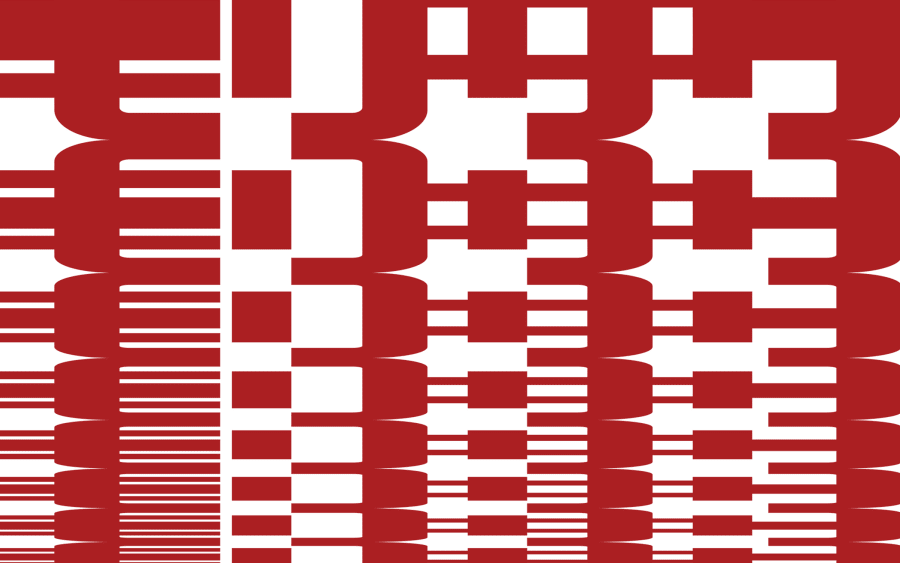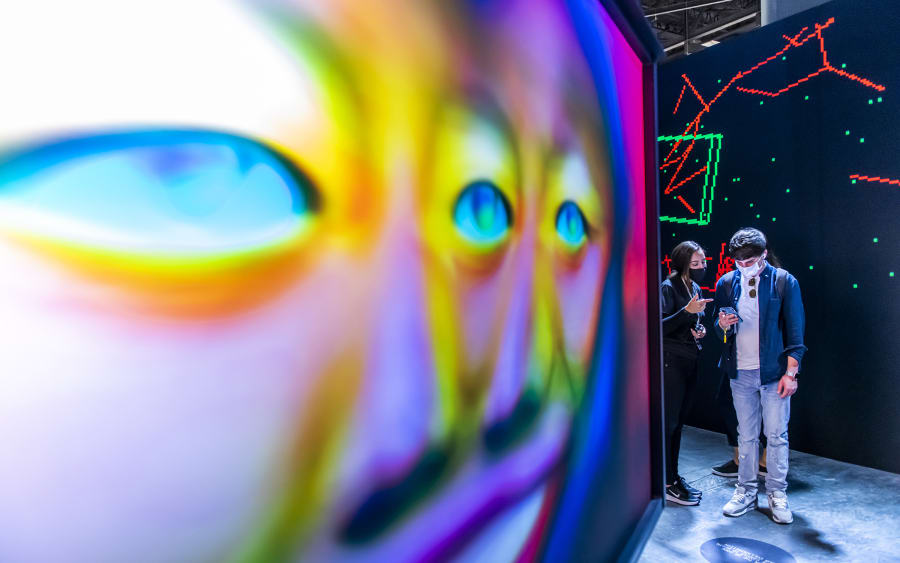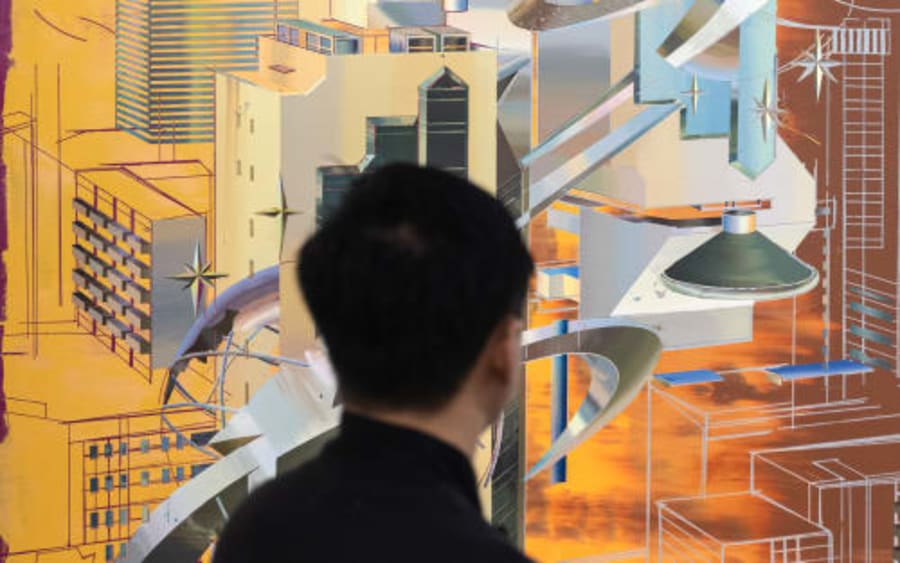Recent years have seen the emergence of a digital art world, sometimes referred to as the ’NFT space’ or ‘Web3,’ with its own marketplaces, magazines, and models of behavior. Despite consistent sales of digital art by leading auction houses, the crypto communities of Discord, X (formerly Twitter), and Farcaster, still seem to inhabit a separate art world. Yet art has always been an expanded field, and works of digital, generative, and AI art are as much a part of that hybrid history as those of analog media. It is not hard to imagine a near-future when the bleeding edge of digital technology and theory is fully integrated into a more inclusive art world. Until that moment, Alex Estorick maps out an artistic terrain and market evolving at dizzying speed.
Web3 publications
Thanks to a cluster of new publications, there is now greater clarity surrounding the emerging categories of digital art and how they fit within different histories of media. As a result, there has never been a better time to start collecting.
When we started Right Click Save as an online magazine (now also a book) we set out to document the nascent space of Web3 through conversations with emerging artists on the basis that they should shape the terms by which their own work is evaluated. As the editorial arm of a startup, ClubNFT, that is dedicated to securing digital assets, the magazine also seeks to educate collectors about how to protect their collections. Founded by the prominent collector Jason Bailey – better known as Artnome – Right Click Save has built up a comprehensive archive of conversations with prominent artworld figures who have already embraced art on the blockchain, including Marina Abramović and Hans Ulrich Obrist. Numerous other publications have also entered the fray, providing new perspectives on the emerging space of digital art.
Where nft now has provided rolling coverage of the latest releases since the NFT boom of 2021, Outland has brought rigorous contemporary art criticism to Web3 thanks to the leadership of Brian Droitcour, once of Art in America. More recently, Le Random has sought to contextualize ‘on-chain’ generative art (where the artist creates a system that generates art with some level of autonomy on the blockchain) in light of the long history of algorithmic practices, which harks back to the earliest known cave drawings, some of which strictly adhered to geometric principles. Co-founded by the collector known pseudonymously as thefunnyguys, with editorial directed by Peter Bauman, Le Random is a long-term project to develop a ‘digital generative art institution’ with its own ‘chain-agnostic’ collection. In contrast, The Tickle
is a tokenized publication tailored to the Tezos community. Overseen by Johnny Dean Mann and renowned for its sumptuous design, The Tickle reminds us that the story of digital art is increasingly written into the blockchain.
The new collector economy
If the NFT market was once driven by hype, today it integrates traditional art market tactics including pre-selling and the placing of artworks in prominent collections. With platforms increasingly operating across multiple blockchains and allowing credit card transactions, there is now less preventing traditional collectors from buying NFTs, even if they still require a crypto wallet to take custody of their works.
Today, the majority of digital art sales take place on Bitcoin, Ethereum, and Tezos. Because of its lower transaction costs, Tezos remains a natural starting point for collectors looking to explore the ecosystem on a budget. It was the grassroots appeal of the platform Hic Et Nunc that originally drew digital artists from all over the world to Tezos. Today, the core of that community has migrated to Teia, while the spirit of radical inclusivity continues on fx(hash), a generative art platform where many of the world’s leading creative coders have cut their teeth as contemporary artists. These include Iskra Velitchkova, Michaël Zancan, and Kitel, whose remarkable Fields of the Abandoned Homeland (2023) is an epic cycle of hope by an artist forced from his home in Kharkiv by Russian rocket bombardment.
For Zancan, ‘the real innovation and artistic value of generative art was the introduction of randomness and the fact that when you purchased an artwork, you didn’t know what you were going to buy.’ Increasingly, gen art also involves co-creation between artists and their collectors. For this reason, fx(hash) introduced fx(params) as a tool allowing collectors to play with the parameters of an algorithm on the basis that they might be more likely to buy a work if they have some agency over the final output.
From generative art to generative AI
The Ethereum-based platform Art Blocks unlocked a new market for generative art through curated releases by the likes of Dmitri Cherniak, Tyler Hobbs, and Operator. According to Hobbs, it was the birth of a new ‘long form’ of generative art that really altered audience perceptions by vastly expanding the number of images generated by a single algorithm. This turned collecting into a hunt for so-called ‘grails’ – surprising outputs that reveal the emergent potential of code.
One platform that has adapted the logic of the long form to generative AI is EmProps, which offers beguiling curated collections together with an open studio for human-machine collaboration. Just as the camera liberated painting from representation, so artists working with machine learning are challenging canonical forms of creativity. Perhaps the standout show from this year’s inaugural edition of The Digital Art Mile in Basel was that of FellowshipAI, whose ‘Collaborations with the Artificial Self’ was a who’s who of AI art history – from Harold Cohen to Holly Herndon and Mat Dryhurst. Reflecting on the creative potential of generative AI, Fellowship’s co-founder Alejandro Cartagena argues that ‘the in-between images that these tools facilitate, no human can create. When artists and collectors understand that, we will really see AI at its best.’
If 2021 was the year of the NFT explosion, when platforms like Foundation, MakersPlace, and SuperRare rose to prominence, it was also the moment when generative art came of age, with people increasingly recognizing the work of pioneers such as Vera Molnár, Herbert W. Franke, and Roman Verostko, who had often been ignored by the art world. As Pace Gallery and others are acknowledging, generative art actually revitalizes analog media not least because the highest resolution form of display is still a print. From a technical standpoint, code also suits being tokenized on a blockchain, which is better at storing numbers and letters than large files. As a result, it is hard not to view on-chain generative art (if it really is ‘on-chain’) as a more secure class of digital asset. Right now, there is particular excitement around Highlight, which, according to the generative poet Ana María Caballero ‘provides remarkable flexibility at very affordable minting and transaction costs.’
Although social media privileges new releases, it is also important to note that a huge volume of high-quality work is available on the secondary market. objkt.com aggregates all categories of digital art minted on Tezos, including crypto art, (code-based) generative art, AI art that uses machine learning, and PFPs (profile pictures). Like many on-chain platforms seeking to provide white-glove services, objkt.one also curates one-of-one artworks for the primary market.
Collective wisdom
For collectors who might want a helping hand navigating this new landscape, Feral File’s online exhibition program is the product of collaboration with digital art curators of different generations. Spearheaded by the renowned generative artist Casey Reas, but spotlighting a variety of digital art forms, the platform makes for a natural landing spot for collectors inclined toward critical and conceptual practices. According to Feral File’s director of exhibitions, Whitney Hart, ‘our app also removes the friction of opening a digital wallet and streaming art to screens in your home, and we accept credit cards as well as cryptocurrency to make collecting easy for both traditional and crypto-native collectors.’ The promise of hybrid collecting is also evident on Verse, an online platform that has refined the display of born-digital art in its physical London space. For the artist Marcelo Soria-Rodríguez, whose work centrifugal (2023) conjures Web3’s endless hype cycle, ‘Verse offers the luxury of slowing down at a moment when we have forgotten what it means to establish a dialogue with works of art. If we can tame the vertigo of life without an endless scroll then we can find a path to human recovery.’
Alex Estorick is editor-in-chief of Right Click Save, an online magazine that seeks to drive critical conversation about digital art.
Caption for top image: Marcelo Soria-Rodriguez, centrifugal (2023). Courtesy of the artist.
Published on July 18, 2024.


